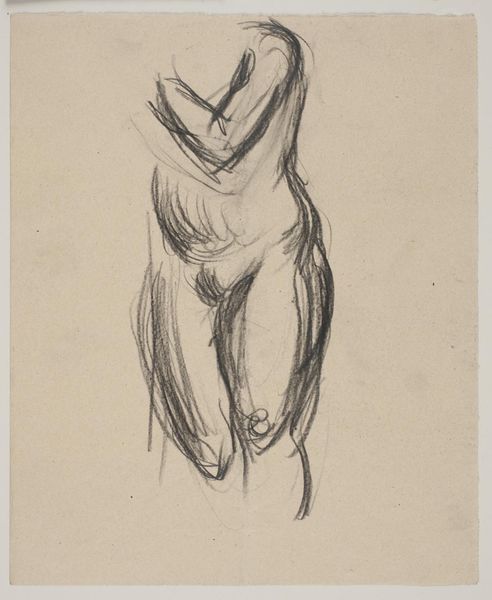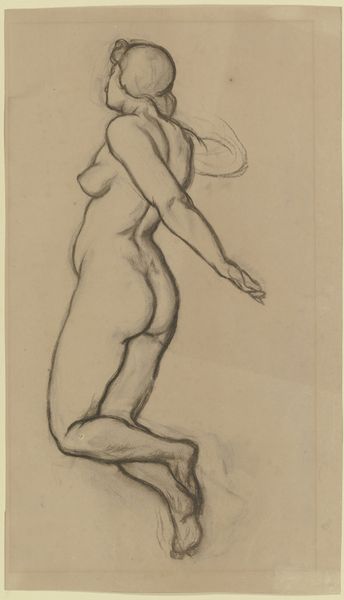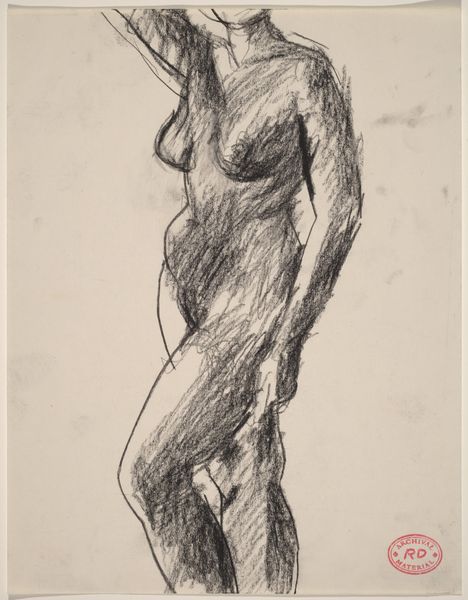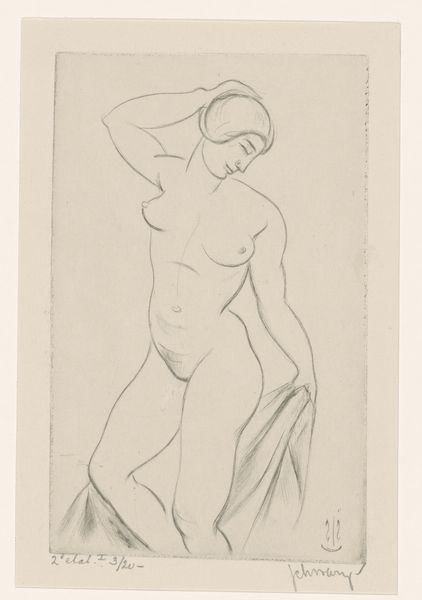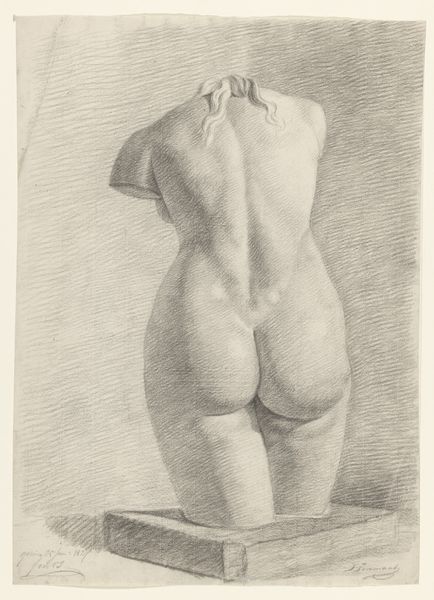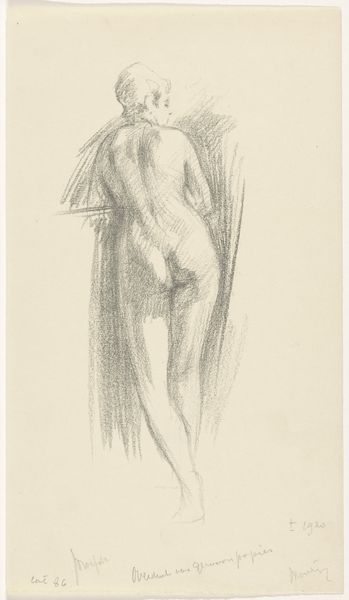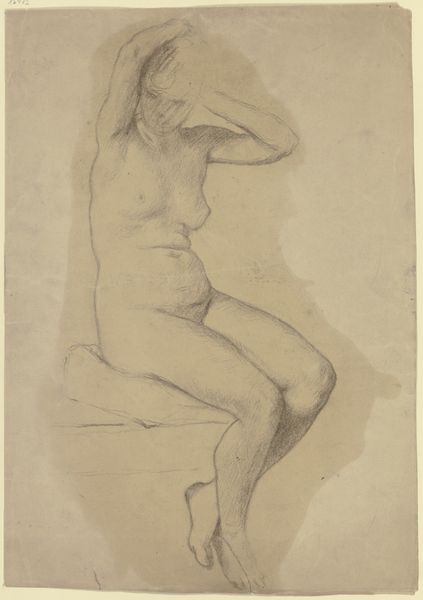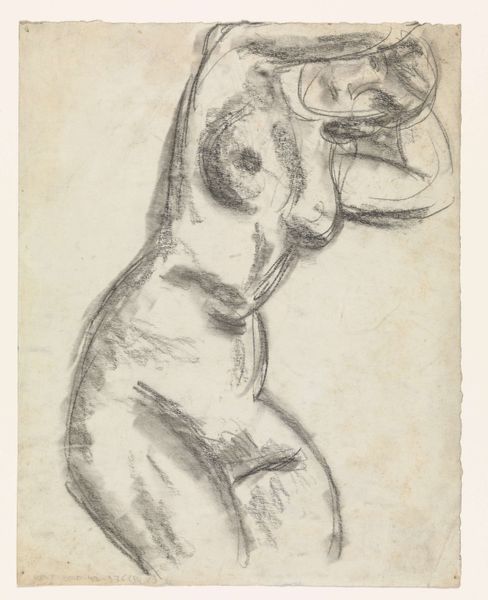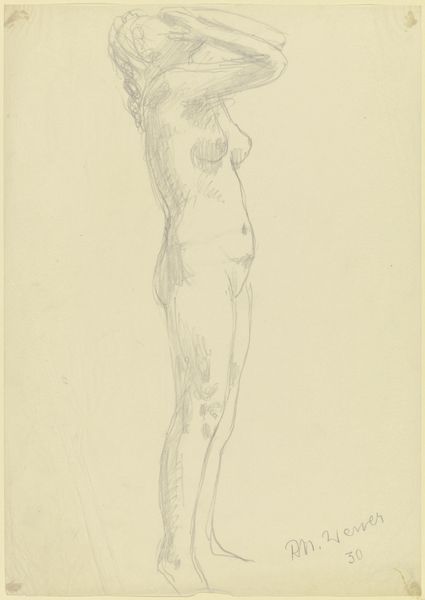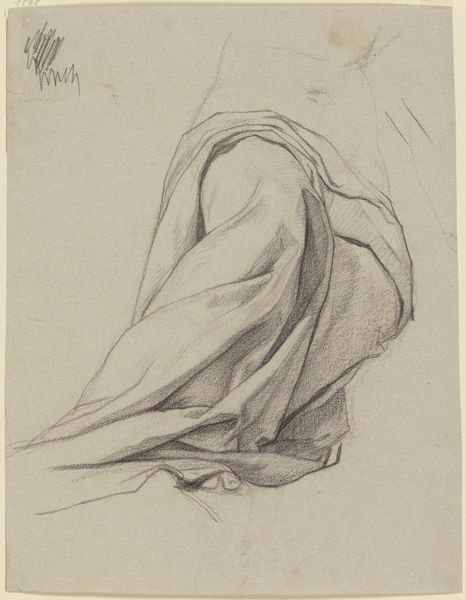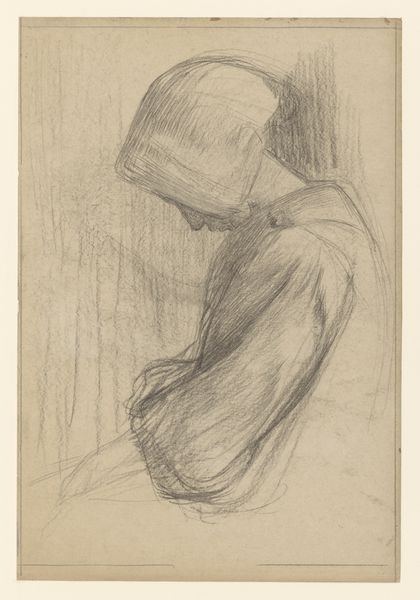
drawing, pencil, graphite
#
pencil drawn
#
drawing
#
neoclassicism
#
pencil sketch
#
classical-realism
#
figuration
#
pencil drawing
#
pencil
#
graphite
#
portrait drawing
#
history-painting
#
nude
Dimensions: height 475 mm, width 335 mm
Copyright: Rijks Museum: Open Domain
Editor: Here we have Johannes Tavenraat's "Plaster cast of an antique statue of a female torso," likely from 1827. It’s a graphite drawing. The modeling of the torso is interesting – I’m curious about the artist’s intent. What do you make of it? Curator: Well, look at the sheer labor involved in producing this drawing. Graphite on paper – humble materials, yet transformed through painstaking effort. Tavenraat wasn't just depicting a torso; he was engaging in a form of material appropriation. Editor: Appropriation? In what way? Curator: Think about it. The original sculpture, likely marble or bronze, embodies classical ideals and perhaps even wealth. By rendering it in graphite, Tavenraat democratizes it, making it accessible to a wider audience through reproduction. It’s a form of cultural production dependent on both artistic skill, material accessibility, and broader dissemination through, potentially, prints. The paper, the graphite – these are all products of their own industries, embedded in networks of labor and consumption. What do you see as the significance of rendering a 3D object into 2D in terms of production? Editor: It almost flattens the original's importance. The drawing then exists less as fine art and more as something reproducible, more utilitarian? Curator: Precisely! It blurs the lines between high art and the tools of craft, shifting the focus from inherent value to the means of its representation and circulation. It makes you wonder, doesn't it, about the social function of art at the time. Editor: Definitely something to consider, the role of replication on value and accessibility. I hadn't thought about that tension before!
Comments
No comments
Be the first to comment and join the conversation on the ultimate creative platform.
